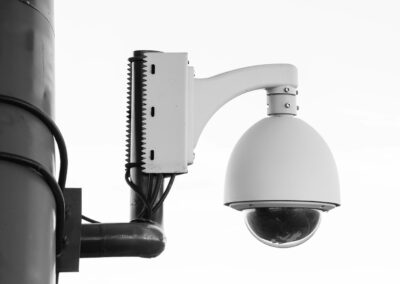Enhancing Cybersecurity in Modern Business Environments
The Importance of Zero Trust in Cybersecurity
The integration of Zero Trust principles in cybersecurity is increasingly recognized as a critical approach to mitigating the risks associated with insider threats and unauthorized access. Zero Trust is a security framework that operates on the premise that threats can exist both inside and outside the network. Therefore, it requires strict identity verification for every individual and device attempting to access resources on a private network, regardless of whether they are located within or outside the network perimeter.
In rapidly developing regions such as Saudi Arabia, the UAE, Riyadh, and Dubai, where digital transformation is a priority, the adoption of Zero Trust principles is essential. Businesses in these regions are becoming more aware of the need to protect their digital assets and ensure the security of their operations. The Zero Trust model helps prevent unauthorized access and ensures that only authenticated and authorized users can interact with sensitive data and systems.
Zero Trust principles are especially relevant in today’s interconnected world, where traditional perimeter-based security models are no longer sufficient. With the increasing prevalence of cloud computing, mobile workforces, and interconnected devices, businesses must adopt a security strategy that effectively addresses the complexities of modern IT environments. By implementing Zero Trust, organizations can enhance their security posture and protect against a wide range of threats.
How Zero Trust Mitigates Insider Threats
Insider threats, whether intentional or accidental, pose a significant risk to organizations. These threats can come from current or former employees, contractors, or business partners who have access to an organization’s systems and data. Zero Trust principles mitigate these risks by implementing continuous verification, least privilege access, and comprehensive monitoring.
Continuous verification is a core component of the Zero Trust model. It involves regularly checking the identity and access rights of users and devices. By doing so, organizations can ensure that only authorized users can access critical resources. This continuous process helps detect and prevent unauthorized access attempts, even if an insider’s credentials are compromised.
The principle of least privilege is another critical aspect of Zero Trust. It ensures that users and devices have only the minimal level of access necessary to perform their functions. By limiting access rights, organizations can reduce the potential damage that an insider can cause. For example, if an employee only needs access to specific files to do their job, they should not have access to the entire network.
Implementing Zero Trust: Best Practices
Implementing Zero Trust principles requires a comprehensive approach that encompasses technology, processes, and people. Organizations should start by conducting a thorough assessment of their current security posture and identifying areas where Zero Trust can be applied. This assessment should include evaluating existing access controls, identity management systems, and monitoring capabilities.
Next, organizations should implement robust identity and access management (IAM) solutions that support Zero Trust principles. These solutions should provide strong authentication methods, such as multi-factor authentication (MFA), to verify user identities. Additionally, IAM systems should enforce the principle of least privilege by managing and restricting access rights based on user roles and responsibilities.
Monitoring and logging are also crucial components of a Zero Trust strategy. Organizations should implement advanced monitoring solutions that provide real-time visibility into user activities and access patterns. These solutions should be capable of detecting and responding to suspicious activities, such as unusual login attempts or unauthorized access to sensitive data.
Zero Trust in Practice: Success Stories
Case Study: Financial Services in the UAE
A leading financial services company in the UAE recently adopted Zero Trust principles to enhance its cybersecurity posture. The organization faced increasing threats from insider attacks and needed a comprehensive solution to protect its sensitive customer data. By implementing Zero Trust, the company achieved significant improvements in its security infrastructure.
The first step involved deploying multi-factor authentication for all employees, ensuring that only verified users could access the network. Next, the company implemented strict access controls based on the principle of least privilege. This approach limited access to critical systems and data to only those employees who needed it to perform their duties.
Additionally, the organization deployed advanced monitoring and analytics tools to continuously monitor user activities and detect potential threats. This proactive approach enabled the company to quickly identify and respond to suspicious activities, reducing the risk of data breaches and insider threats. As a result, the financial services company significantly enhanced its security posture and protected its customers’ sensitive information.
Case Study: Healthcare Sector in Saudi Arabia
In Saudi Arabia, a major healthcare provider adopted Zero Trust principles to safeguard its patient data and ensure compliance with regulatory requirements. The organization faced challenges related to insider threats and needed a robust security framework to protect its sensitive health information.
To address these challenges, the healthcare provider implemented a Zero Trust architecture that included multi-factor authentication, least privilege access, and continuous monitoring. By verifying the identity of all users and devices, the organization ensured that only authorized personnel could access patient records and medical systems.
The healthcare provider also implemented advanced threat detection and response capabilities, enabling it to quickly identify and mitigate potential security incidents. This proactive approach helped the organization maintain the confidentiality and integrity of patient data, comply with regulatory requirements, and build trust with patients and stakeholders.
Future Trends and Conclusion
As cyber threats continue to evolve, the adoption of Zero Trust principles will become increasingly important for organizations worldwide. In regions like Saudi Arabia, the UAE, Riyadh, and Dubai, where digital transformation is accelerating, implementing a Zero Trust model is essential for protecting critical assets and ensuring business continuity.
The future of cybersecurity will likely see further advancements in Zero Trust technologies, including the integration of artificial intelligence and machine learning to enhance threat detection and response capabilities. Organizations that invest in these technologies will be better equipped to protect their digital assets, mitigate insider threats, and maintain a strong security posture.
In conclusion, the adoption of Zero Trust principles is a crucial step for organizations looking to enhance their cybersecurity defenses. By implementing continuous verification, least privilege access, and comprehensive monitoring, businesses can mitigate the risks associated with insider threats and unauthorized access. For executives, mid-level managers, and entrepreneurs, investing in Zero Trust is not just a security measure but a strategic move towards long-term business success and resilience.
—
#zerotrust #cybersecurity #insiderthreats #AIincybersecurity #businesssuccess #SaudiArabia #UAE #Riyadh #Dubai #ArtificialIntelligence #Blockchain #GenerativeAI #executivecoaching #leadershipskills #projectmanagement
























